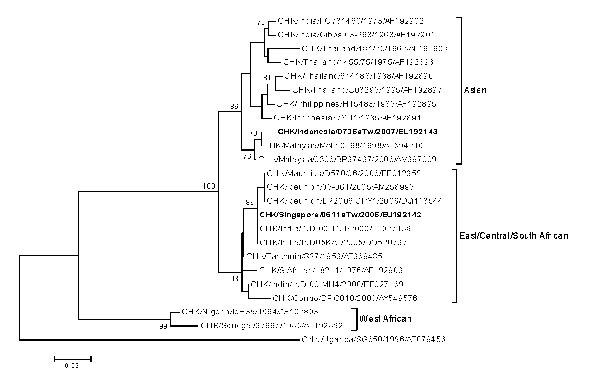Volume 14, Number 8—August 2008
Letter
Two Imported Chikungunya Cases, Taiwan
Figure

Figure. Phylogenetic relationships of chikungunya virus (CHIKV) isolates from 2 imported cases in Taiwan. The tree was constructed by the neighbor-joining method using partial nucleotide sequences of envelope protein 1 (E1) gene (255 bp) of 23 CHIKV strains. O’nyong-nyong (ONN) virus sequence was used as the outgroup virus. Bootstrap support values >75 are shown. The 2 imported CHIKV strains in Taiwan are designated by boldface type. Viruses were identified by using the nomenclature of virus/country/strain/year of isolation/GenBank accession no. Scale bar indicates substitutions per site.
Page created: July 12, 2010
Page updated: July 12, 2010
Page reviewed: July 12, 2010
The conclusions, findings, and opinions expressed by authors contributing to this journal do not necessarily reflect the official position of the U.S. Department of Health and Human Services, the Public Health Service, the Centers for Disease Control and Prevention, or the authors' affiliated institutions. Use of trade names is for identification only and does not imply endorsement by any of the groups named above.